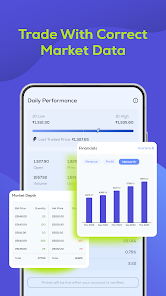Ever imagined being a part of the financial realm where it is possible to seize opportunities even before they materialize? Sounds like a distant dream? Well! It is something that is achieved by millions of traders worldwide with the availability of Futures and Options (F&O) trading opportunities. For those already invest in IPO, F&O trading can be a familiar term. For the rest, we will dive deep with this blog post into the captivating landscape of trading with these derivatives, commonly referred to as F&O. Derivatives are nothing but financial contracts that empower the investors to make profits from the underlying assets without actually owning those assets and by merely speculating price movements and managing risks.
They come in various forms, such as futures, options, swaps, and forwards, and the objective of using these financial instruments is to hedge against potential losses and profit from daily market fluctuations. Using an online share market app, Future & options trading can be performed on nine different indices and around a hundred securities by only paying the initial margin.

Let’s say someone wants to trade in a stock future worth five lakhs, and if the margin is 10%, then the trader needs to shed 50 K, and here the catch is the larger the margin percentage, the higher the profit volume. It sometimes has a downside when prices don’t move as expected, but with F&O stocks, there is always an option to mitigate risk factors, which we will discover later in this article. Investment online and F&O trading in commodities may sound like an appealing strategy, but that is always recommended for investors with a huge appetite for risks as the commodity markets are more volatile and the risk rate is commensurately higher.
Let us unravel the mechanism of F&O trading in stock market apps that facilitates it and how it benefits investors in gaining profits while managing risk.
Understanding the Futures:
It is the type of derivative in which the trader agrees to the contract of buying or selling a particular stock at the agreed-upon price (known as the strike price) and by a specific date (known as the expiration date). If we consider this in a real-world scenario, let’s assume that a trader buys the Futures contract to buy 1000 shares of an underlying stock at RS 60 each at a particular date. On the expiration date, even if the prices have increased to RS 70 each, the buyer will buy at the determined price only, making a neat profit of 10K. If the prices fall to RS 50, the trader will still have to buy the stocks with a loss of the same amount. Futures contracts are available on other assets and reserves, such as agriculture, petroleum, gold, and currency. In places where certain commodities are always expected to soar high, futures trading is invaluable in escaping the risk factors related to price fluctuations.
Understanding the Options:
Options are another form of derivatives available on a standard investing app. It is slightly different than the Future. Here, the trader goes into a contract that allows buying or selling a particular stock on a specific date with a predetermined price. Still, if the trader wishes to do so, there will be no obligation. As we discussed in the previous example, the trading will commence if only initiated (mostly in case of generating profits). Otherwise, it will not. The only loss the trader will bear is losing the premium fees paid, which are generally much lower than the potential losses. There are two forms of it, call & put Option, used for buying and selling stocks.
With the penetration of the internet among the masses and a growing affinity towards financial literacy, more young people are keen to explore the evolving dynamics of the economic landscape. These online investment platforms are helping them to cut the clutter and navigate seamlessly.